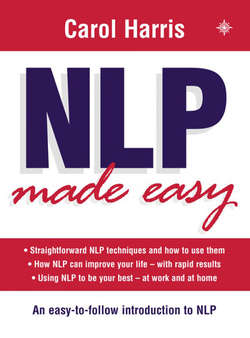Читать книгу NLP Made Easy - Carol Harris - Страница 18
Beliefs
ОглавлениеOne of NLP’s strengths is its ability to influence change at deep levels. Although change can be brought about by teaching people new skills, it is beliefs, values and assumptions which are the foundation of each individual.
Much of NLP is about changes in beliefs, values and attitudes, sometimes direct and sometimes indirect. For example, a direct belief change could be brought about by confronting a person with an example which contradicts their previous experience; maybe showing them a yellow tomato if they believed tomatoes were always red or encouraging a person from a minority group to apply for (and get) a senior job which they had believed was beyond their reach. An indirect belief change could be brought about through exposing a person to different learning situations which, cumulatively, resulted in them changing their beliefs, for example giving a person who believed they were poor at public speaking the opportunity to practise until they were convinced they could do it. Equally, assumptions may be changed when a person gains a different perspective on a situation, for example a person who thinks a neighbour is being indifferent to them, but then finds out the person is hard of hearing and has not been able to hear what is being said.
The interesting thing about the way in which NLP works to effect such changes is that it can help people experience changes in their mind, rather than having to put them in ‘real-life’ situations to face real (or imagined) obstacles. It has been found that people have actual mental ‘locations’ for beliefs and that by helping a person to locate and utilize these locations, it is possible to influence the strength of their beliefs.
